[8] Global Parameters
Global Parameters allow externalization of variables such as hostnames, ports, and credentials for data connections. This enables environment-specific configurations (e.g., dev, test, prod) without modifying workbooks or data tables in the Data Library.
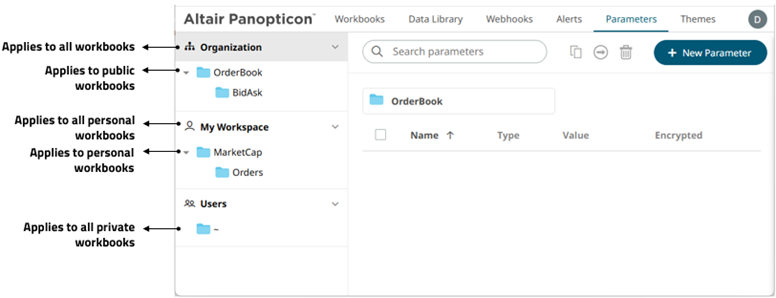
| Parameters Set In | Description |
|
Organization’s root folder |
Inherited by all of the available folders and applied to all workbooks |
|
Public root folder (e.g., Organization> OrderBook) |
Inherited by the public root folder’s subfolders and applied to all public workbooks. |
|
Personal root folder (i.e., My Workspace) |
Inherited by the personal root folder’s subfolders and applied to all personal workbooks. |
|
Users root folder (i.e., ~) |
Inherited by the user root folder’s subfolders and applied to all private workbooks. |
For example, an Administrator added these global parameters:

Two parameters added to the Organization root folder
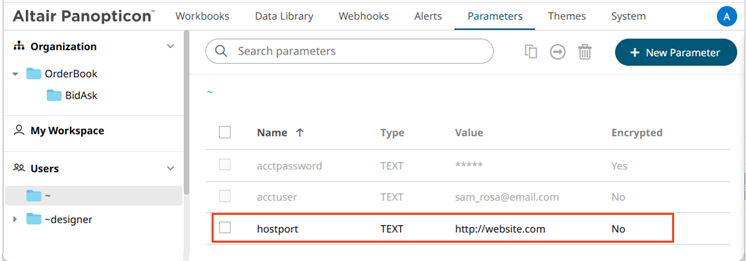
One parameter added to the Users root folder
The same global parameters are inherited and displayed for a Designer user:
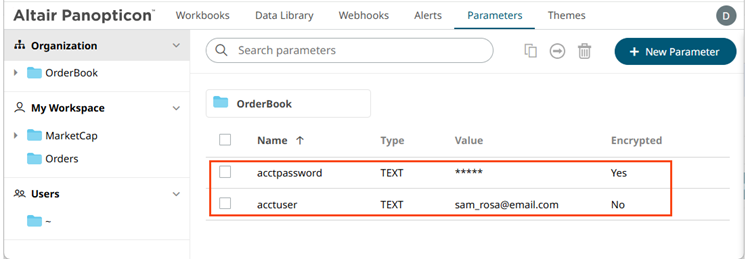
Parameters added to the Organization root folder
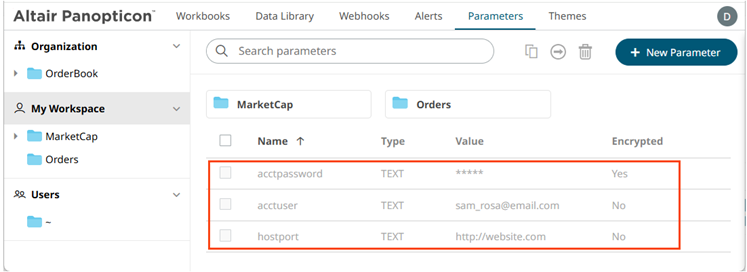
The parameters added by the Administrator in the Organization and Users root folders are inherited in the My Workspace folders of the Designer user.
Aside from adding global parameters, you can also do the following on the Parameters page:
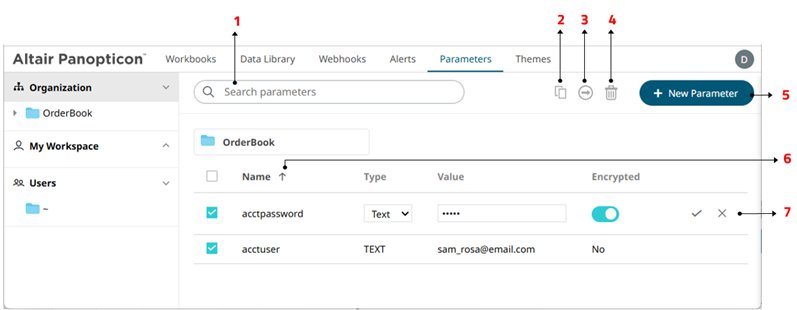
| Section | Description |
| 1 |
Search Parameters To search for a particular global parameter, enter it in the Search Parameters box. |
| 2 |
Copy Copy selected parameters to other folders. |
| 3 |
Move Move selected parameters to other folders. |
| 4 |
Remove Delete parameters. |
| 5 |
Add Parameter Add new parameters. |
| 6 |
Sort Parameters Sort the parameters by Name, Type, Value, or Encryption. |
| 7 |
Modify Parameter Modify the data type, value, and encryption property of the parameter. |
NOTE: Inherited parameters cannot be deleted, moved, or copied.
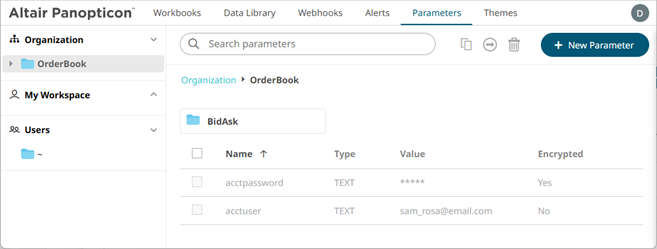
(c) 2013-2025 Altair Engineering Inc. All Rights Reserved.